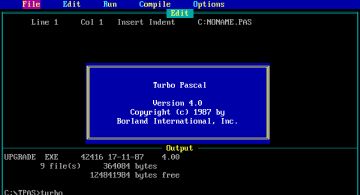デザイン
Knowledge-based Video Game Design: Information is a power-up
Felix Viering
Celeste
In the challenging 2018 2D jump and run game Celeste, the player will come across a seemingly impossible platforming challenge: a ledge that is too high for them to get to, even when using all the game’s movement mechanics like jumping, climbing and air dashing. At that point of Celeste’s 7th “B-side” level The Real Summit, the game therefore teaches the player a new ability: the so-called “wall bounce”. During an upwards dash, they can input a jump while next to a wall to gain extra upwards momentum. Besides its usefulness and difficult execution, what is most interesting about this technique is the way it is unlocked. Technically speaking, it isn’t. Even before learning about the wall bounce in level 7 B-side, the player is able to use it. The only thing they were missing was the knowledge of its existence. In a sense, the they “unlocked” the wall bounce only by being told how it works through an in game tutorial. To understand what makes this kind of “knowledge-based” game design so special, we must first look at how other games would usually handle this kind of unlockable ability/power up.

Celeste’s wall bounce tutorial in its 7th B-side level
Progression systems
The 1994 Super Metroid by Nintendo has a progression system that is structured around the game’s numerous unlockable abilities. E.g. the missiles can be used to open red missile-doors scattered around the entire game world, which gives the player access to previously inaccessible areas. To unlock the missiles, the player must first find and collect their first missile tank. So even though the world of Super Metroid is littered with crossroads, the path to the end of the game is actually quite linear, and the map opens up gradually with each collected upgrade.
A lot of games which came after Super Metroid implement this kind of progression system. Some examples are classic The Legend of Zelda games like The Legend of Zelda: Ocarina of Time, the 2018 God of War or basically any game classified as a Metroidvania (a game genre defined by being similar to Super Metroid and Castlevania: Symphony of the Night).
This style of unlock based progression can be broken down to a simple system based on keys and locks. Unlockable abilities like Metroid’s missiles can be seen as keys, while the red missile doors they open are the locks.
A knowledge based progression system, on the other hand, works differently: we still keep the locks, but instead of giving the player keys to unlock them, we teach them how to lock pick by using tools they already have access to. In other words, what was originally an unlockable item or power-up is now knowledge about game mechanics. This approach has the potential to be very satisfying for the player because the options available to them are not bound to unlockable items that are managed within a save file but the player’s actual game knowledge.

The first missile tank unlocked in Super Metroid
TUNIC
As an example on how knowledge based game design is implemented, we can look at a game that was released in 2022; TUNIC is a The Legend of Zelda-inspired action adventure with simple but challenging combat and tough puzzles. This game does feature some unlockable items in the classical sense, like a sword, shield or magic staff, but the most important collectibles in TUNIC are pages of the in-game instruction manual. Like the iconic instruction manuals that were included with the physical copies of early games like Super Mario, TUNIC’s digital instruction booklet provides information on how to use the game’s mechanics and clues for its numerous puzzles. But unlike physical manuals, the booklet is not accessible to the player from the beginning. Instead, each page has to be collected individually inside the game itself. Therefore, most of TUNIC‘s mechanics are hidden from the player until they find the relevant instruction manual pages. E.g. one of those hidden mechanics is the ability to upgrade the player character’s health, stamina and magic gauges. However, how to do so and even that this mechanic exists within the game is only revealed to the player with a collectible page of the instruction booklet. Nonetheless, because it is only game knowledge these pages provide, and the upgrade ability was already available from the beginning, it is entirely possible for the player to figure out how it works on their own. This is another characteristic shared between knowledge-based progression systems; the possibility, that players could figure out solutions to certain puzzles out of order or even stumble into them by accident, gives knowledge-based games a sense of being completely open for exploration from the very beginning.

A page from TUNIC’s in-game instruction booklet on how to dodge
Other occurrences of knowledge-based Game Design
Of course, the aforementioned games TUNIC and Celeste are not the only video games with knowledge based mechanics. One of the first examples that come to mind is the 2019 space exploration game Outer Wilds. It encompasses one of the purest form of knowledge based player progression. In fact, equipped with the required knowledge, it is easily possible to reach the end of the game in about 30 minutes of play time. However, since most players don’t have the knowledge on how to do so, the average amount of play time it takes to finish Outer Wilds lays at around 21 hours, according to howlongtobeat.com. Every discovery is a clue to a puzzle in a different, seemingly unrelated place of the game world. In the end, they connect in an intricate web of information to solve Outer Wild’s biggest and final mystery.
The 2018 detective game Return of the Obra Dinn is another game based on the concept of piecing together clues to solve a mystery. Here, the player is tasked with determining the fate of the Obra Dinn, a trade ship that was lost at sea in the year 1803 and mysteriously reappeared four years later at the port of Falmouth. It is the player’s job to string together clues on what happened to each of its crew members to reach conclusions which in turn lead to even more clues. Every mechanic needed to solve its mystery is provided by the game early on. Again, everything needed by the player to progress is the knowledge they collect.
Another example of knowledge-based game design can be found in The Witness, a puzzle game from the year 2016. Early on, the player will come across a challenge that uses puzzle-elements they are not familiar with yet. They need to progress to a different section first to learn about these mechanics. Afterwards, equipped with new knowledge, they can choose to backtrack and finally solve the puzzle.
Games like the before mentioned Outer wilds, TUNIC and Return of the Obra Dinn have a distinct feel from the rest of the gaming land scape because of their unique way of handling progression through knowledge. Therefore, they are sometimes categorized as Information-games. “Metroidbrainia” is another term used to describe games of this particular genre.

The Outer Wilds ship log showing collected clues. (Blurred to avoid spoilers)

A puzzle at the beginning of The Witness most players won’t be prepared to solve once they encounter it for the first time
You only play once
Despite how memorable and interesting the results of knowledge-based game design often are, there are some issues associated with this approach. An obvious one is lack of replay value. E.g. Outer Wilds is almost pointless to play for a second time. Because player progression in it is tracked through their knowledge of the game, it is basically impossible to start a new save file with the progress being completely reset. For the same reason, the experience can be easily spoiled for first time players by simply being told information that they would have otherwise had to find in the game itself.
This kind of game design can also be tough to pull off correctly. For it to not become stale, the way in which information is hidden must be thought out well and tested to make sure players don’t usually stumble upon clues they were not yet supposed to find.
Conclusion
Knowledge-based game design mainly consists of a different way to think about progression in video games. Rather than constraining our idea of an unlockable power-up to the digital confines of the game, we can extend its definition to include game knowledge as well. In game design, it can be used as a tool to look at progression systems under a new light. It could also enable the design of more open-ended explorable worlds that are only closed off if the player does not yet have the required game knowledge.
Sources
- Celeste by Maddy Makes Games Inc. and Extremely OK Games, Ltd., video game 2018
- Super Metroid by Nintendo R&D1, video game 1994
- TUNIC by Finji/TUNIC Team, video game 2022
- Outer Wilds by Mobius Digital, video game 2019
- Return of the Obra Dinn by Lucas Pope, video game 2018
- The Witness by Thekla, Inc., video game 2016
- Knowledge Based Games, and Why You Should Play Them by Superduke, video essay 2023
- The Making of Outer Wilds – Documentary by Noclip – Video Game Documentaries, documentary 2020
 2023/07/07
2023/07/07 2023/04/28
2023/04/28 2022/10/07
2022/10/07 2022/03/04
2022/03/04 2021/01/29
2021/01/29 2020/09/18
2020/09/18 2020/01/31
2020/01/31